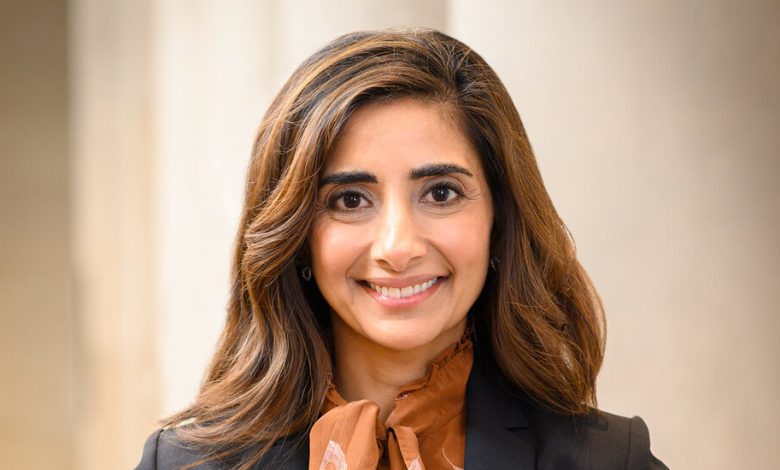Baltimore Museum of Art Taps Its Chief Curator as Its Next Director

The Baltimore Museum of Art announced Tuesday that Asma Naeem, its chief curator since 2018 and interim co-director, will become director effective Feb. 1.
Born in Karachi, Pakistan, and raised in Baltimore, Naeem practiced law for almost 15 years before switching careers and finishing her Ph.D. in American art. She becomes the first person of color to lead the museum, founded in 1914, and will oversee its collection of more than 97,000 objects and an annual operating budget of $23 million.
Naeem, 53, has been interim co-director of the museum since Christopher Bedford, the former director, left last June for the top post at the San Francisco Museum of Modern Art. Naeem had a central role in shaping and implementing the Baltimore Museum’s strategic plan, adopted in 2018, that placed social equity alongside artistic excellence as a core principle guiding the museum’s mission. Since then, the B.M.A., as it is known locally, has been at the forefront of efforts to acquire and exhibit work by underrepresented artists and to diversify its staff, board and audiences — issues being addressed by museums nationwide to varying degrees.
“We were most impressed with how Asma has been part of the work and with her vision for the institution, in terms of how to build on this work and take us to that next level,” said James D. Thornton, chairman of the museum’s board, which promoted Naeem after a 10-month national search.
“We are committed to being more relevant as an institution, as an anchor in our city,” he added. “Asma grew up in Baltimore. She has a great pulse on the region and clearly our city, which just gave her an edge over other candidates that were in consideration for the opportunity.”
Naeem said in a phone interview that her ability to “hit the ground running” and nurture existing relationships with both staff and community stakeholders is an advantage in her new job. “I want to promote the dazzling artists who live and work here,” she said. “We have a vibrant community that I think can be better supported and whose voices can be amplified through the museum platform.”
As chief curator, Naeem has been dedicated to bringing work by neglected historical and contemporary women and artists of color into the museum’s permanent collection — a goal she also set in her curatorial work from 2014 to 2018 at the Smithsonian’s National Portrait Gallery in Washington. In Baltimore, she organized solo shows of international artists including Candice Breitz, Isaac Julien, Valerie Maynard and Salman Toor, and was instrumental in last year’s groundbreaking exhibition “Guarding the Art,” for which 17 members of the museum’s security staff served as guest curators and received professional development.
Naeem’s upcoming project, “The Culture: Hip Hop and Contemporary Art in the 21st Century,” opening April 5, places fashion and objects by Lil’ Kim, Virgil Abloh, Dapper Dan and Gucci in conversation with works by fine artists such as Derrick Adams, Mark Bradford, Lauren Halsey and Julie Mehretu.
“The ways in which we can readily relate to so many of our audience members, who are moved by hip-hop or aspects of their own culture that they don’t always see reflected in museum programming, is of vital importance to me,” Naeem said.
She remembered feeling a combination of awe and intimidation on her own first visit to her hometown museum as an undergraduate at the neighboring Johns Hopkins University, where she majored in art history and political science. She went on to get a law degree from Temple University in 1995, focusing on domestic violence while working for the Manhattan district attorney’s office. In 2000 she began prosecuting ethics allegations against lawyers at the Office of Bar Counsel (now called the Office of Disciplinary Counsel) in Washington, an arm of the D.C. Court of Appeals.
She found “trying to right the wrongs of the world” through the legal system to be draining, however, and began a career shift. “Art history, as well as the civic space of the museum, offered a kind of limitless combination of how to shape a public good,” said Naeem, who received a master’s degree in art history from American University in 2003 and a Ph.D. from the University of Maryland in 2011 while continuing to work in law and raise three children with her husband, Babar Shafiq, an orthopedic surgeon.
One of Naeem’s top priorities in her new job will be helping the museum regain visitors lost during the Covid-19 closure. In the 2023 fiscal year the B.M.A. expects to reach 75 percent of its pre-Covid attendance. Other priorities include the retention and compensation of museum staff, who voted last summer to form a union, part of a wave of unionizing efforts at museums across the country. Thornton, the board chairman, said that the museum’s leadership has met three times with the union’s negotiating team.
“Asma’s obviously close to people across the institution that have felt they needed a union, and her past legal experience will be helpful to us as we continue to work through a collective bargaining agreement,” he said.
In 2020, the museum’s leadership pulled back from selling three of its blue-chip paintings for $65 million, funds largely intended to create an endowment for better salaries. Current and former museum directors had criticized this plan to use funds from the sale of art, known as de-accessioning, for operating costs rather than for acquisitions and the direct care of the collection, in keeping with the Association of Art Museum Directors’ guidelines. Thornton said this experience underscored the importance of fund-raising by Naeem and the board to accomplish the institution’s lofty salary goals.
Naeem said her skills as a lawyer and her decades in public service will help her as director. “I enjoy bringing people to the table who have perhaps oppositional viewpoints,” she said, “and helping them arrive at a mutually beneficial outcome.”
